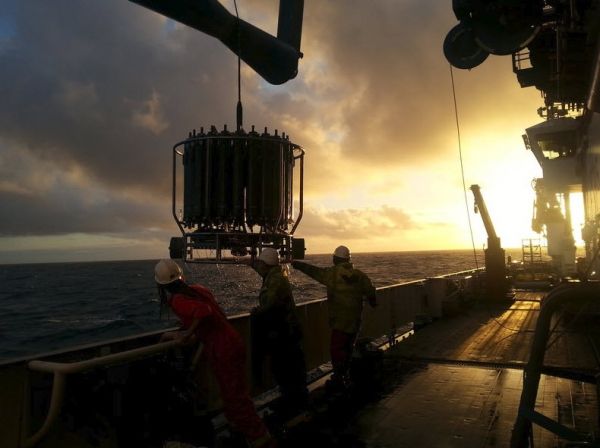Lead (PB) is one of few elements for which the impact of human activity on the marine environment is clearly evident. It has no biological function and is toxic to humans and marine organisms. The anthropogenic perturbation dates back to the middle of the 19th century, with coal and leaded gasoline combustion serving as major Pb sources to the atmosphere. Anthropogenic Pb is transported in the atmosphere over long distances and deposited in remote areas resulting in enhanced Pb concentrations in surface oceans of >190 pmol kg-1 during the peak of the Pb emissions in 1970-80. These are about 100 times higher than natural background levels.
Since then stricter environmental regulations have resulted in reduced Pb emissions to our environment. Leaded gasoline has now virtually been phased out with notable decreases in Pb concentrations in oceanic surface waters. A study by an international team of scientists led by GEOMAR Helmholtz Centre for Ocean Research Kiel presents new observational data that indicates a reduction in Pb concentrations in surface waters of European shelf seas. Nevertheless, the legacy of Pb, in particular from the Mediterranean, is still present and new Pb sources emerge in the marine environment. The team has published its results in the renowned international scientific journal Geophysical Research Letters.
The last assessment of Pb concentrations in European shelf seas was undertaken when leaded gasoline was still widely used. In the new study the marine biogeochemists Dagmara Rusiecka, Dr. Martha Gledhill and Professor Eric Achterberg from GEOMAR show that a 4-fold reduction in Pb concentrations is evident in surface waters of the Celtic Sea, compared to measurements undertaken two to three decades ago. “This is the first study showing a pronounced reduction in Pb concentrations in European surface waters since the phasing out of leaded gasoline,” says Dagmara Rusiecka, PhD student and lead author of this study. “and underpins that the successful phasing out of leaded gasoline led to a substantial reduction in atmospheric Pb pollution and deposition in marine waters”, Rusiecka continues. Nevertheless, in the study area the Pb concentrations are still 10 to 60-fold higher than natural background levels. The Pb deposited in the ocean is ultimately transferred to the sediments. “Since the atmospheric inputs are reduced, we can now see that the legacy Pb is being released by the sediments, forming a new Pb source to the environment”, Prof. Eric Achterberg from GEOMAR explains. Interestingly, waters from the Mediterranean which reach European shores at a depth of about 1000 m, carry a strong anthropogenic Pb signal. The Mediterranean has received a great deal of Pb from surrounding countries, with for example leaded gasoline in Italy, Spain and Greece only being phased out in 2003.
Read more at GEOMAR Helmholtz Centre for Ocean Research Kiel
Photo: Water sampling in the Celtic Sea with a clean CTD System. CREDITS: D. Rusiecka, GEOMAR.


